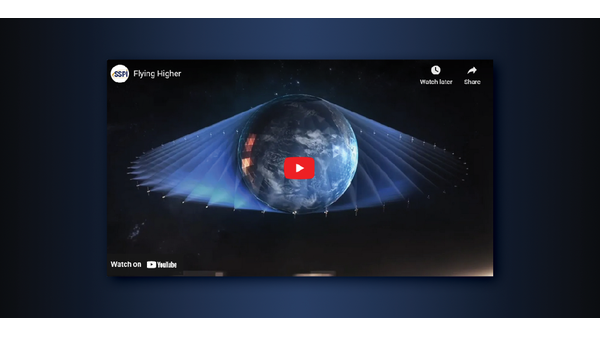There is a place in space where no atmosphere reaches, where satellites are invisible because they fly so high, and where they can hover magically over a single spot on the Earth’s surface. It is called geosynchronous orbit or GEO, because it synchronizes with the turning Earth. It is the first orbit, the oldest one in continuous use by human beings. For decades, it has brought the world television and phone calls, internet and business networks, and communications for military bases and humanitarian missions, remote mines and ships at sea. MORE
Eternal Orbit is underwritten by
Podcast
On Mondays during the Eternal Orbit campaign, you’ll get to listen to a new podcast featuring experts on a wide variety of topics as we explore the major value and proven business case that GEO continues to offer in a satellite business where LEO and MEO have attracted massive investment and customer interest but have yet to demonstrate long-term commercial viability.
GEO 2.0, Episode 4: GEO 2.0 and the Outernet
What happens when the old and young meet and bring to the world best of breed connectivity – or collide in the chase for its rich market share, capital and the future? In an industry where terrestrial and orbital, once contestants in a bitter communications technology “religious war,” have found convergence and common ground around technologies such as 5G and soon 6G, and where deals such as Apple and Globalstar show the innovation that can occur with these platforms, the next question is, “When will there be true multi-layer connectivity that can readily connect EVERYTHING without complicating the customer experiences?”
Further, when will the 5 billion unconnected find the internet with ease and make the “Middle of Nowhere” no more? What do established, profitable GEO leaders, such as Hughes Network Systems, with its extraordinary new Jupiter-3 satellite now in orbit think about this and the future of connectivity and satellite industry investments? Can it work with upstarts?
In this episode of GEO 2.0, based on the September edition of the New York Space Business Roundtable, you’ll hear from Joe Bernabucci, Director of Strategy & Market Intelligence at Hughes, William Mudge, Vice President of Engineering Operations, USA at Speedcast and Steve Nixon, President and Co-Founder of SmallSat Alliance. They discuss if the Outernet is outer nuts and if GEO has entered a new era that will be even more potent than the first.
More GEO 2.0 podcasts →
Videos
The Better Satellite World campaign shows the world why our industry, though often invisible, is indispensable to modern life, through powerful stories and videos that depict space and satellite technologies contributing to the economy, society and sustainability of planet Earth. Some of our Better Satellite World videos focus on the enduring value of GEO to the industry and the world as a whole, and SSPI also released a new video on the topic during this campaign. You can hear from SSPI-WISE members in an online discussion of the topic here as well!
Coming Up Next
Thank you for joining us for the Eternal Orbit campaign!
News
New Better Satellite World Video from SSPI Explores the Enduring and Still Increasing Value of GEO in the Modern Satellite Landscape – September 26, 2023
SSPI Launches Eternal Orbit, a Multi-Week Online Exploration of the Value of GEO in the Modern Satellite Landscape – September 4, 2023
China launches first geosynchronous orbit radar satellite – SpaceNews – August 12, 2023
Weighing new tools for geostationary capacity – SpaceNews – June 14, 2023
Geostationary Extended Observations (GeoXO) – NOAA
First Astranis satellite successfully deployed to GEO, beams first signals down to Alaska – Satnews – May 24, 2023












